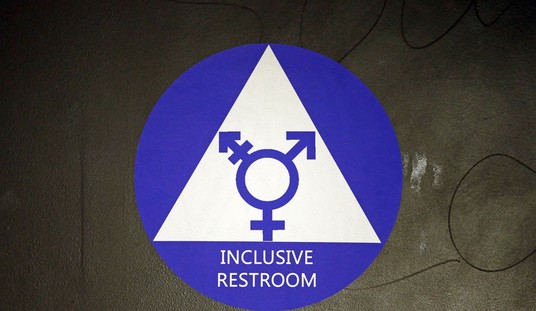by Andrew Seybold
The FCC is set to act on the TV White Space issue at its meeting on November 4, 2008. Chairman Martin wants a vote to permit unlicensed operation in the TV White Space (the space between TV transmitters). The Office of Engineering Technology (OET) has released a report stating that white space devices with geo=location and sensing technologies could be used, under some conditions, without interference to existing surrounding users such as television broadcasters and wireless microphones. I guess they did not feel it was necessary to comment on the interference that could happen to TV sets in the homes of customers of this White space technology or perhaps even to TV sets in the same apartment building or even homes next door to an active white space system.
It appears as if the FCC is listening mainly to the Internet folks who want as much spectrum as possible for the wireless Internet — which should not surprise anyone, since the word “Internet” is still a magic word in DC and is being translated into millions of new jobs, lots of money, and, or course, the ability to serve up cheap (or free) Internet anywhere in the United States. There does not seem to be any concern at the FCC regarding interference issues, either regarding the white space or the AWS-3 band or anything else. One would think that after the mistakes made by the FCC in the area of interference in the Nextel rebanding issue and Broad over power lines, that someone within the organization (which is supposed to not only issue licenses but also control the spectrum and its usage) would raise some concerns.
But the FCC has gutted its field offices, no longer really sends people out proactively to check on transmitters and make sure they are operating within specifications, and/or respond to cases of interference. In one case, off the coast of Santa Cruz, California, members of the local fishing fleet started to purchase and use equipment in the amateur radio band instead of using the VHF marine band for which they are licensed. The reason was that if they used the latter their competitors would overhear where they were heading and when they had found fish. It took more than three months of ham radio operators documenting, recording, and plotting signals before the FCC would even respond . . . and then it simply issued a notice of violation and went back to the office.
It appears as if the only way to get the FCC’s attention these days is on a national basis. I recently called the Boston Office of the FCC for a client regarding some issues related to interference in the 1900 MHz band. And I was told that they had no technical people in that office any longer and could not help.
So, it appears that once we get this new type of White Space equipment into the field the interference issues will not get addressed unless there is a national uproar over interference. Another sad fact of life is that many who use the airwaves today don’t even bother to file a license; they just buy the equipment and start using it. I will bet that employees in the FCC today don’t even remember when the agency lost control of the Citizens Band, stopped issuing licenses and just walked away from this chunk of spectrum at 27 MHz. Today it is still used by many and the “licensed” power limits of 5 watts have been ignored for years. CB has become a band where the guy with the most power wins and to heck with everybody else.
Public safety organizations, railroads, and commercial wireless operators have become self-policing for their own spectrum and interference issues. Most of them get no help from the FCC, but have learned that using their member organizations to work together on issues works instead — and works well. So if part of deregulation is destroying the enforcement arm of the FCC, the agency has been very successful. And there is no guarantee yet that White Space will police itself — which makes it all the more imperative that we be more than “pretty sure” there won’t be any interference before more spectrum is opened up. And this is especially true for this new unlicensed spectrum, where tracking down the cause of interference will be almost impossible.
Right now, the Feds are enamored with the wireless Internet, cognitive and software defined radios which will “cure” all of our spectrum issues with their smarts. The next few years are going to be interesting to watch. Fortunately, market forces will take care of some of the issues. Just looking at the number of networks which are going to be built and the number of subscribers that are available should tell us something about how many of them can survive. But the FCC is determined to open up more spectrum and sell off as much of it as then can, with, apparently, no provisions in place to protect those who have already paid for their piece of the spectrum.
People living in major metro areas are going to have more and more choices of providers, and are going to learn that you get what you pay for. During the major fire just north of here in Central California, the cable company was off the air for over 18 hours because of a power failure in the area — and that included TV, Internet, and phone service. My DSL, and wired phone, and yes, my wireless phone, all worked fine through the entire event. The cable company is working hard to correct their problems so that this does not happen again — but as new providers come on-line they are not going to spend the money to provide 5-9’s network reliability, because they are not going to be able to afford to do so and still see a profit potential in their future.
Muni-Wi-Fi was all the rage not too long ago, and today system after system is being turned off because of interference issues and lack of a sound business model. Yet here we go again with new networks and a new portion of the spectrum being turned over for unlicensed use. Unlicensed means just that, and it was something that the cities who deployed Wi-Fi did not understand. When they signed up for their deployment and access points started popping up on their street lights, others in homes and businesses were turning on their own access points and the result was interference and systems degradation to the point of making the systems useless. Even today those who receive free Wi-Fi access to the Internet in places like San Francisco and portions of the Silicon Valley get very upset when the system is down for any reason — even though it is free they feel as if they have the right to the service once it has been deployed.
Let’s take a look at a typical metro area today. First we have at least 4 major wireless networks: AT&T,Nextel, Sprint, and Verizon Wireless. There is also a good chance that either Metro PCS or Leap Wireless has a network, perhaps other tier two or three players. Then we have the MVNO’s on those four networks, Next up, starting in Baltimore, is Xohm (or Clearwire), and perhaps at least one cable company that has spectrum in either the AWS or 700 MHz band. Lets now add in Wi-Fi and 2.4 GHz, and 5.8 GHz. For wired access, there is also DSL and Cable, and perhaps a reseller or two.
Thus, the total number of wireless companies offering voice services today in a typical metro area is 10, the total number of wireless data possibilities is 13, wired voice adds 2 more, and then there’s another 2 for wired data services. So our metro area now has a total of 15 providers of some form of data service to the Internet. Remember too, that today, data makes up less than 30% of a voice and data service providers’ income, so a data only service provider, which does not have voice capability, is going to be at a disadvantage already.
Now let’s add the 700 MHz LTE networks from Verizon and AT&T (there will be higher data speeds at some point in time than existing 3G networks), AWS-3 spectrum (with free service to anyone who will settle for lower data speeds, and TV White Space (pick a number of different ISP’s who will deploy it). The end result is that each of us will have between 15 and 20 providers of data services of one kind or another to choose from, and most of them will not be free, but services we will have to pay for.
Even if, as I believe, we will be at 300% wireless penetration within the next 5-7 years, the numbers of providers per market is already more than can be supported. So we will add a few more, and we will lose some because of the economy, mergers and acquisitions, and for other reasons — but at some point the number of providers who can survive in this type of market will be decide by the revenue they can generate and not the technology they have deployed.
Rural America, is, of course, being mostly ignored, once again, except for the single ASW-3 license (if it is issued), and perhaps some of the 700 MHz build out. Rural America will still be underserved, again because of market forces and the fact that there has to be a return on investment.
So here we go again, more unlicensed spectrum, more “nationwide” free Internet access provided by the winner of the AWS-3 auction. None of these with any provisions to curb interference, and without oversight by the FCC to make sure that there are no issues.
I can tell you one thing for sure, I would not want to be one of the new FCC Commissioners who will be appointed after January 20, 2009 and who is going to have to live with this for the next four to eight years. To summarize, my concern is that the companies which have spent the money to provide 5-9’s reliability (including TV stations), are going to basically ignored in favor of the “new” wireless Internet until there is a major uproar over coverage and reliability. And in the meantime many in this Country will vote with their wallets for less than 5-9’s reliability — and at some point in the future will come to regret their decision.
For more of Andy’s insights, go to www.AndySeybold.com









Join the conversation as a VIP Member